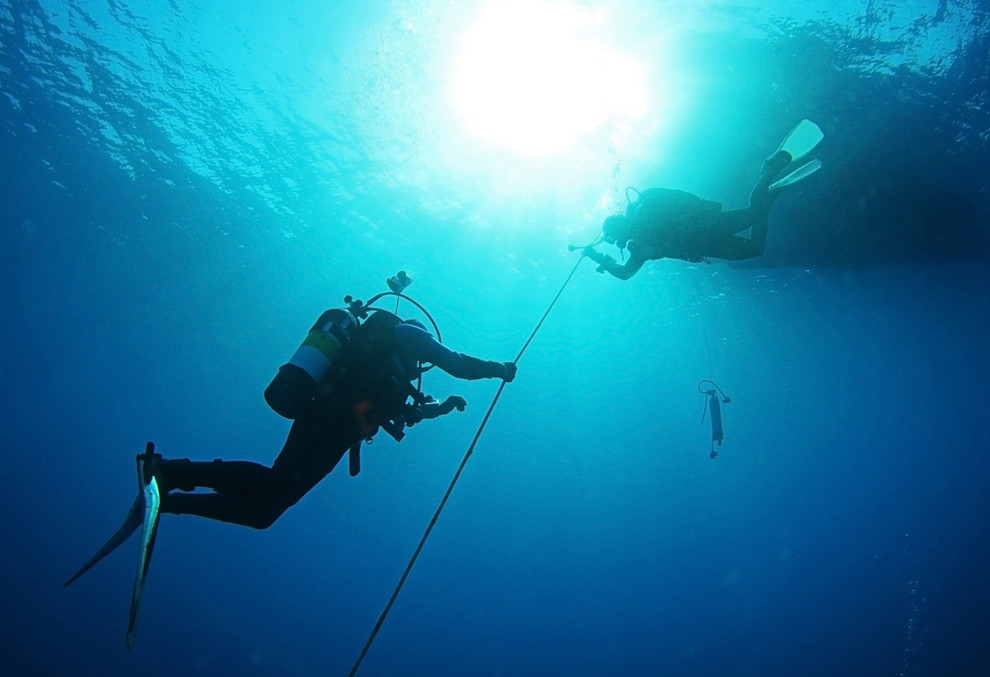Scuba diving can be an exciting and exhilarating experience, allowing us to explore the breathtaking beauty of the underwater world. However, it's important to always prioritize safety when diving, and one key aspect of this is the safety stop.
So, when should you do a safety stop during a dive? The short answer is: every time. No matter the depth of your dive or the duration, it's crucial to include a safety stop as part of your dive plan.
But why is the safety stop so important, and how do you properly execute one? Let's dive in (pun intended) to the details.
WHAT IS A SAFETY STOP?
A safety stop is a brief pause at a specific depth during the ascent phase of a dive. It typically lasts for three to five minutes and is done at a depth of 15 to 20 feet (5 to 6 meters).
The purpose of the safety stop is to allow the body to offgas excess nitrogen, which builds up during the dive and can lead to decompression sickness (DCS), also known as "the bends."
DCS is a potentially serious and even life-threatening condition that occurs when dissolved gases, including nitrogen, come out of solution in the body and form bubbles.
These bubbles can cause a range of symptoms, including joint pain, fatigue, and skin rash, as well as more severe problems such as paralysis or unconsciousness.
By conducting a safety stop, divers allow the nitrogen in their bodies to safely dissipate before reaching the surface, reducing the risk of DCS.
WHY IS THE SAFETY STOP IMPORTANT?
As mentioned, the primary reason for conducting a safety stop is to reduce the risk of DCS. However, there are other benefits to this crucial step in the diving process as well.
First, a safety stop gives divers an opportunity to check and adjust their equipment before reaching the surface. This is especially important in the event of any equipment malfunctions or problems that may have occurred during the dive.
Second, a safety stop allows divers to establish and maintain proper buoyancy control during the ascent. This is essential for a smooth and safe return to the surface, as well as for preserving the underwater environment and avoiding damaging coral reefs and other marine life.
Finally, a safety stop is a good time for divers to regroup and communicate with their diving buddy. It's a chance to check in and make sure everyone is feeling comfortable and ready for the remainder of the ascent.
WHEN SHOULD YOU DO A SAFETY STOP?
As mentioned earlier, the general rule is to conduct a safety stop every time you go scuba diving, regardless of the depth or duration of the dive.
However, there are a few specific circumstances in which it's especially important to include a safety stop:
When diving at depths greater than 30 feet (10 meters). As you descend deeper into the water, the pressure on your body increases, and you absorb more nitrogen. This means that the risk of DCS increases as well, making it even more crucial to conduct a safety stop on the way back up.
When diving in cold water. Cold water can cause the body to absorb nitrogen more quickly, increasing the risk of DCS. For this reason, it's especially important to conduct a safety stop when diving in cold water.
When diving multiple times in one day. "Dive stacking" – or diving multiple times in a short period – increases the risk of DCS. It's important to allow sufficient time between dives for the body to offgas nitrogen, and conducting a safety stop on each dive can help
How to properly execute a safety stop
Now that we've covered the importance of the safety stop and when to conduct one, let's talk about how to properly execute one. Here are some key tips to keep in mind:
a. Plan ahead.
Make sure to include a safety stop in your dive plan before you even enter the water. This will help ensure that you have enough air to complete the stop and ascend safely.
b Maintain proper buoyancy control
As mentioned, maintaining proper buoyancy control during the ascent is important for a smooth and safe return to the surface. Pay attention to your breathing and make any necessary adjustments to your buoyancy compensating device (BCD) to stay at the proper depth.
c. Stay close to your diving buddy
It's important to stay close to your buddy during the safety stop to check in and communicate. This is also a good time to do a quick equipment check and make sure everything is functioning properly.
d. Stay relaxed and focused
A safety stop is not the time to panic or rush. Take deep, slow breaths and try to relax. This will help you conserve air and reduce the risk of overexertion.
Stay within the prescribed time frame. As mentioned, a safety stop should last for three to five minutes. It's important to stick to this time frame to allow the body to offgas excess nitrogen and reduce the risk of DCS.
Conclusion
In conclusion, the safety stop is an essential part of every scuba dive. It allows the body to offgas excess nitrogen, reducing the risk of decompression sickness, and also provides an opportunity to check and adjust equipment, maintain proper buoyancy control, and communicate with diving buddies.
No matter the depth or duration of the dive, it's important to include a safety stop in your dive plan and properly execute it to ensure a safe and enjoyable diving experience.



